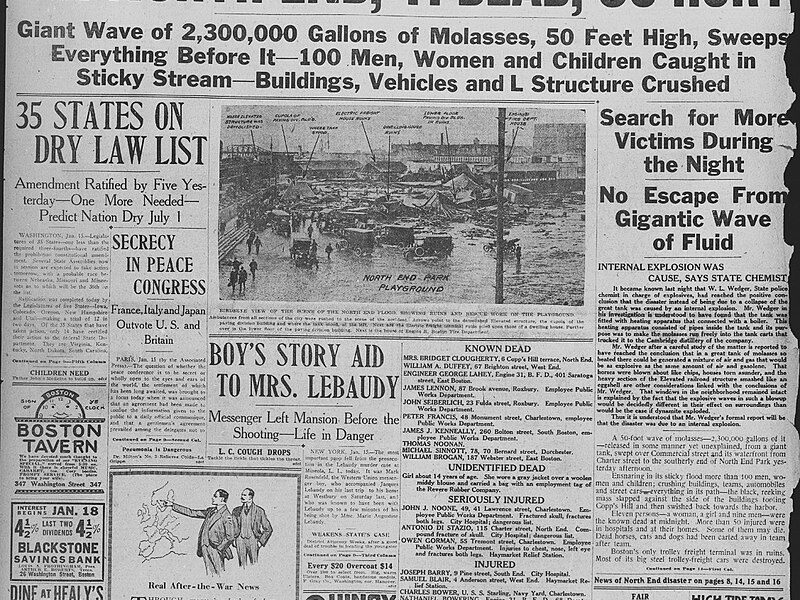On June 15, 1919, a large tank containing over 2 million gallons of molasses burst in Boston, Massachusetts. The sticky wave of molasses flooded the streets, killing 21 people and injuring over 150 others. The bizarre disaster has since become a cautionary tale about industrial safety and engineering failures.
The density of molasses is about 1.4 metric tons per cubic meter (12 pounds per US gallon), 40 percent dense than water, resulting in the molasses having a great deal of potential energy. The collapse translated this energy into a wave of molasses 25 ft (8 m) high at its peak, moving at 35 mph (56 km/h). The wave was of sufficient force to drive steel panels of the burst tank against the girders of the adjacent Boston Elevated Railway's Atlantic Avenue structure and tip a streetcar momentarily off the El's tracks. Stephen Puleo describes how nearby buildings were swept off their foundations and crushed. Several blocks were flooded to a depth of 2 to 3 ft (60 to 90 cm). Puleo quotes a Boston Post report:
Molasses, waist deep, covered the street and swirled and bubbled about the wreckage. Here and there struggled a form whether it was animal or human being was impossible to tell. Only an upheaval, a thrashing about in the sticky mass, showed where any life was. Horses died like so many flies on sticky fly-paper. The more they struggled, the deeper in the mess they were ensnared. Human beings men and women suffered likewise.







